MITE CONTROL
Mite Pests
Beneficial Insectary mass-rears biological pest control agents that explicitly address the natural management of spider mites, broad mites, russet mites, and other mite pests. Several species of mites can be anything from occasional to major pests of crop plants.
Spider Mites

Two-spotted spider mites (Tetranychus urticae) are the most common species of spider mite crop pests in a greenhouse and other controlled environments.
They can feed on hundreds of plant species, making them one of the most common pests that growers encounter.
Like all mites, they have piercing/sucking mouthparts.
Although this is highly variable, they are usually light tan or amber in color with two dark spots.
The spots are sometimes so large that they appear as one big spot.
In the fall and winter months, overwintering females turn solid red or orange.
There are also other color variations beyond this.
Adult females are oval and around half a millimeter long.
Males are slightly smaller, and their shape tapers towards the back.
Two-spotted spider mites prefer hot and dry conditions.
The two-spotted spider mite lifecycle goes egg, larva, protonymph, deutonymph, and adult.
Depending on the temperature, egg to adult takes approximately one to two weeks.
Female two-spotted spider mites will lay around 100 eggs over their 3–4-week lifespan.
The eggs hatch in as little as three days, depending on temperature.
Spider mites start out causing stippling damage to plants which looks like small yellow/brown dots on the leaves.
Once the spider mites increase in numbers, necrotic spots can start to appear.
In extreme cases, foliage loss can occur.
They also create webbing on plants that act as protection and a nursery for their eggs.
The webbing can build up on plants, making them unattractive and unsalable if they are an ornamental variety.
They also feed on flowers, causing them to wither and brown, often having the appearance of spray damage.
Note that imidacloprid can enhance their egg-laying, so use caution if applying to other pests.
Monitor for spider mites by checking the foliage for stippling damage.
Also, tap the foliage onto a white sheet of paper or poster board. Tapping will knock the mites off, and they are easier to see on the white background.
Avoiding extreme hot or dry conditions can help keep spider mite numbers down.
For spider mite prevention, Neoseiulus californicus (CALIforce™) or Amblyseius andersoni (AMBLYforce™A) should be applied to susceptible crops.
Phytoseiulus persimilis (PERSIMILISforce™) work well as a quick knockdown if spider mite hotspots are found.
Russet Mites

Hemp russet mites (Aculops cannibicola) are a common pest on hemp and cannabis crops.
Like all mites, they have piercing/sucking mouthparts.
Light infestations cause little if any visible symptoms on the plants.
Heavy feeding damage can often, but not always, cause the foliage to fold up into a taco or canoe shape. This may be dependent on the cultivar.
Other symptoms of heavy infestations are the leaves’ general dullness (russeting). They may also stunt flower growth.
Russet mites are tiny and cannot be observed without magnification; they are elongated, tapered towards the back end, and have all their legs towards the front of their bodies.
Adults are somewhat mobile but do not tend to move much once they find a place to settle on the plants, often the wind or through air movement from fans.
The immature stages are particularly immobile.
They are most often observed next to the veins of the plants or on the stems.
Much of the biology is unknown but is likely like a closely related species, the tomato russet mite.
The russet mite lifecycle comprises an egg, larva, nymph, and adult stage.
All stages have 4 legs.
Females likely lay one or two dozen eggs (based on tomato russet mites).
Russet mites are so small that growers often don’t know they are infesting the crop until their damage is seen. If damage is observed, there is a russet mite colony already established.
Damage done is highly variable but usually involves distorted and curled foliage.
Scouting without a microscope can make identification a challenge because of the russet mite’s relative size.
Pest populations can quickly spread through workers’ crops and significant crop events such as spacing, pinching, or trimming.
Ensure to scout suspected russet mites thoroughly before these significant crop events occur and potentially delay events if the IPM team cannot control the pest beforehand.
Amblyseius cucumeris and other predatory mites will eat russet mites but likely will not catch up to heavy or even moderate infestations.
Introduce A. cucumeris early and establish them throughout the crop before russet mites present themselves.
If russet mite populations become very high, using an on-label conventional pesticide application is often the only means of control.
When pest populations have diminished and conventional residues have expired, releases of predators can resume.
Monitor for them by looking at the underside leaves with either a powerful hand lens or a microscope. Take leaf samples and flag problem areas to aid in follow-up scouting and applications.
Sanitation of the space and equipment during and between crops can help reduce the perpetuation of the pest.
Scouting and dipping incoming plant material in on-label mineral oil can help reduce outbreaks of russet mites.
Broad Mites

Broad mites (Polyphagotarsonemus latus) are a common pest on ornamental and food crops, hosting over 60 families of plants.
This includes vegetables such as peppers, cucumbers, tomatoes, and eggplants. Ornamentals that can be impacted by them are impatiens varieties, dahlias, gerberas, thunbergias, azaleas, begonias, and verbenas. Cannabis/hemp is also highly susceptible to broad mite infestations.
Like all mites, they have piercing/sucking mouthparts. Feeding damage can cause stunting and distortion resembling, but not limited to, herbicide phytotoxicity.
Broad mites are tiny; females measure in at a maximum of around 0.3 mm, while males are about half the size of females.
Adults are overall an oval shape and have four pairs of legs.
Adults are mobile and can travel long distances by hitch-hiking on flying insects such as whiteflies or aphids or dispersing themselves through the wind.
The eggs’ appearance is unique and can be used to identify a broad mite infestation.
Eggs are almost entirely transparent but have rows of white circular projections on the surface that gives them a speckled appearance and are approximately half the size of an adult.
The broad mite lifecycle comprises an egg, larva, nymph, and adult stage.
The larval stage mites have six legs, and all other later stages will have eight legs.
The larval stage is mobile but is spending most of its time feeding.
The nymph stage is inactive, and adult males will pick up the inactive females in their nymphal stage and carry them to other parts of the plant. Immediately after females emerge as adults, they will mate with the males.
Mated females will produce mostly female offspring, usually around a 4 to 1 ratio female to male. Unmated females can still produce viable eggs that will all be male.
The total number of eggs laid per female is anywhere from around 30 to 75 in her 8-to-13-day lifespan.
Broad mites are so small that growers often don’t know they are infesting the crop until their damage is seen. If damage is observed, there is a broad mite colony already established.
Broad mites are active at temperatures between 60F and 80F but can survive in harsher climates.
Damage done is highly variable but usually involves distorted and curled foliage.
Scouting without a microscope can make identification a challenge because of the broad mite’s relative size.
A quick lifecycle combined with high mobility often requires a broadcast over the entirety of a crop via conventional or biological means.
Pest populations can quickly spread through workers’ crops and significant crop events such as spacing, pinching, or trimming; ensure to scout suspected broad mites crops thoroughly before these large crop events occur, and potentially delay events if the IPM team cannot control the pest beforehand.
Both Amblyseius cucumeris and Amblyseius swirskii readily eat broad mites. Still, they likely will not catch up to heavy or even moderate infestations.
Introduce predators early and establish them throughout the crop before broad mites show up.
If broad mite populations become very high, using an on-label conventional pesticide application is often the only means of control.
When pest populations have diminished, and traditional residues have expired, releases of predators can resume.
Monitor for them by looking at the underside leaves with either a powerful hand lens or a microscope. Specifically, look for their eggs since they are so distinct. Take leaf samples and flag problem areas for follow-up scouting and applications.
Sanitation of the space and equipment during and between crops can help reduce the perpetuation of the pest.
Scouting and dipping on-label incoming plant material can help reduce outbreaks of broad mites.
NATURAL SOLUTIONS
Products We Offer
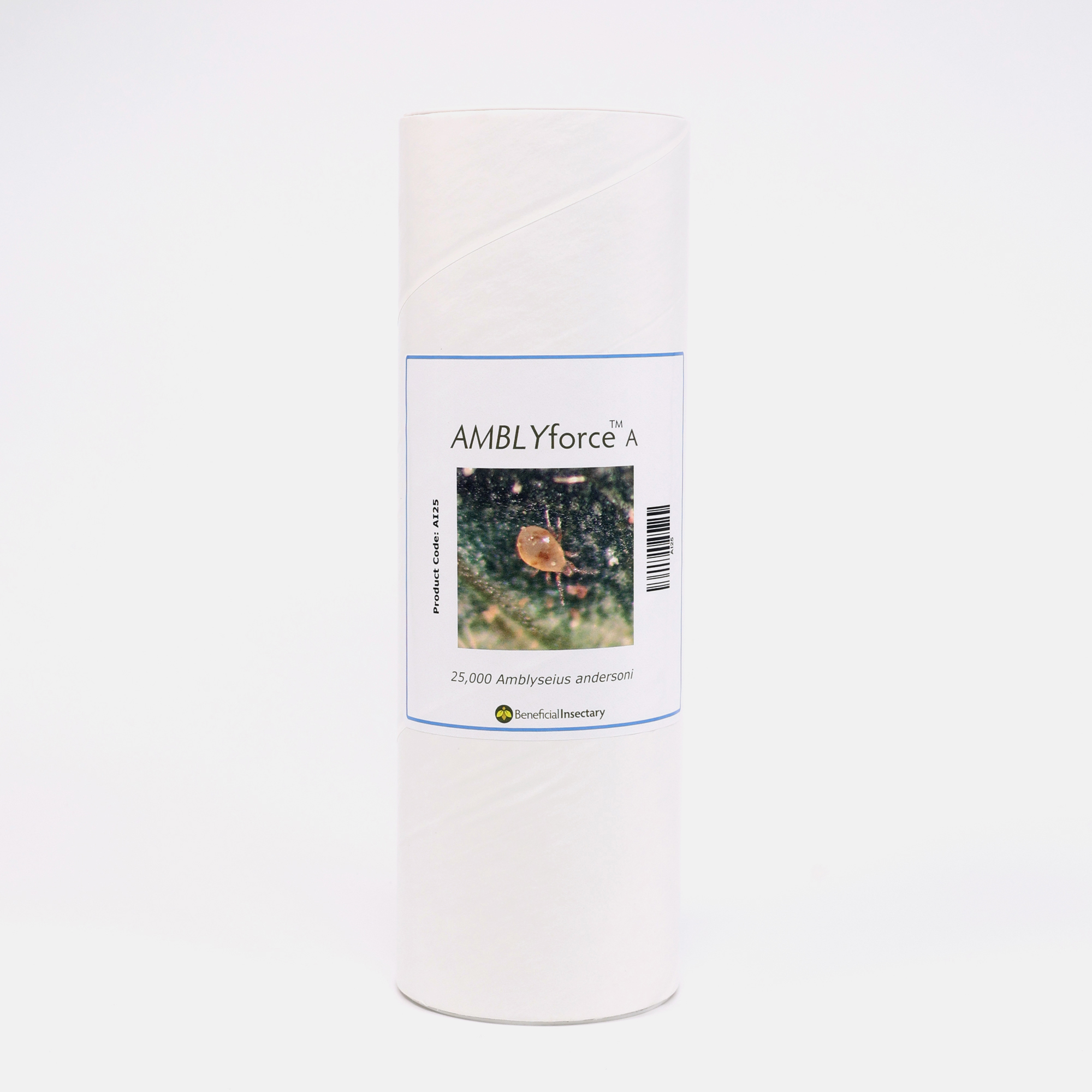
AMBLYforce™ A
Amblyseius andersoni can be used indoors and outdoors on many host plants. They can treat many types of spider mites and other mite pests.
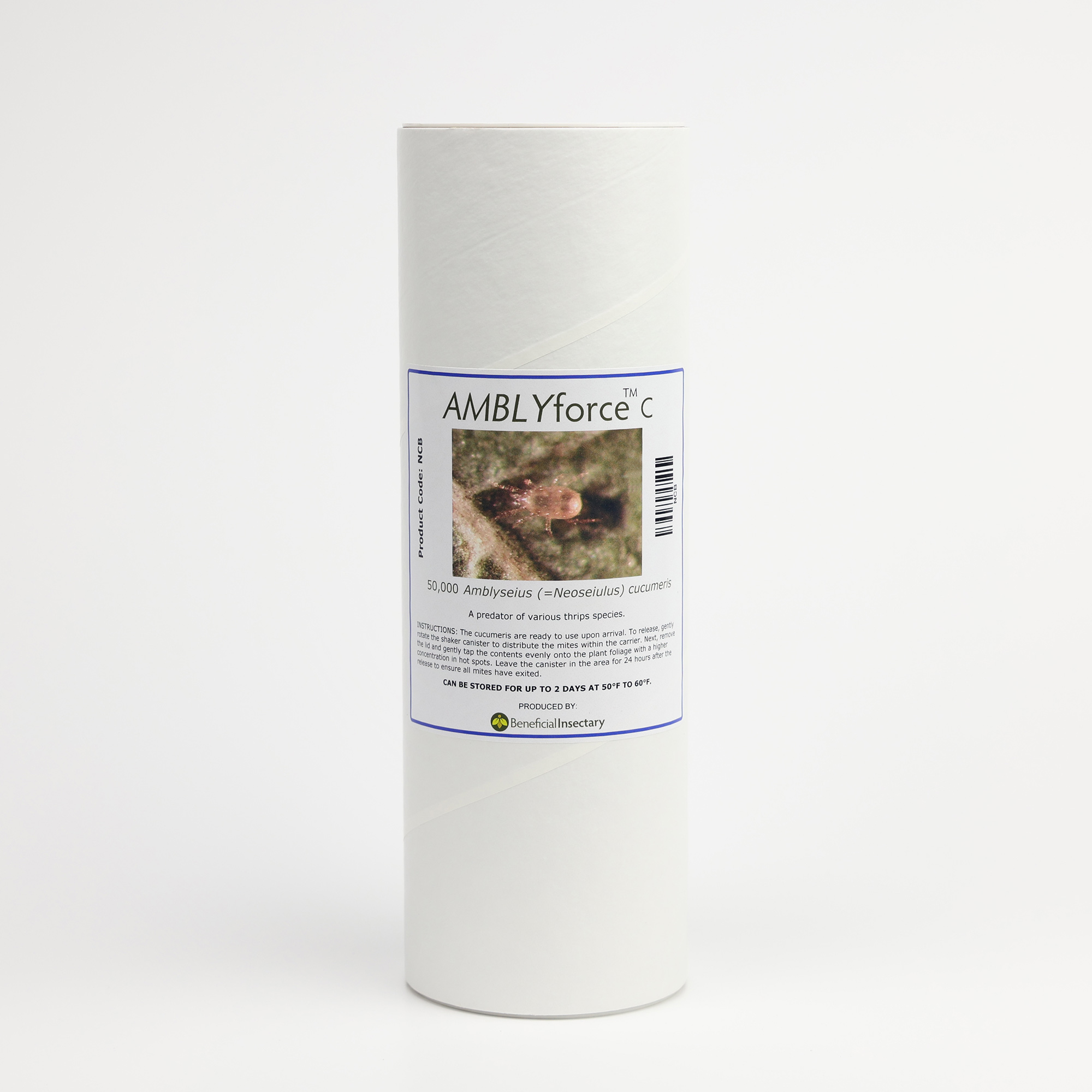
AMBLYforce™ C
(Amblyseius cucumeris) These predatory mites are a keystone in a well-run successful thrips control program. Use these units for control.
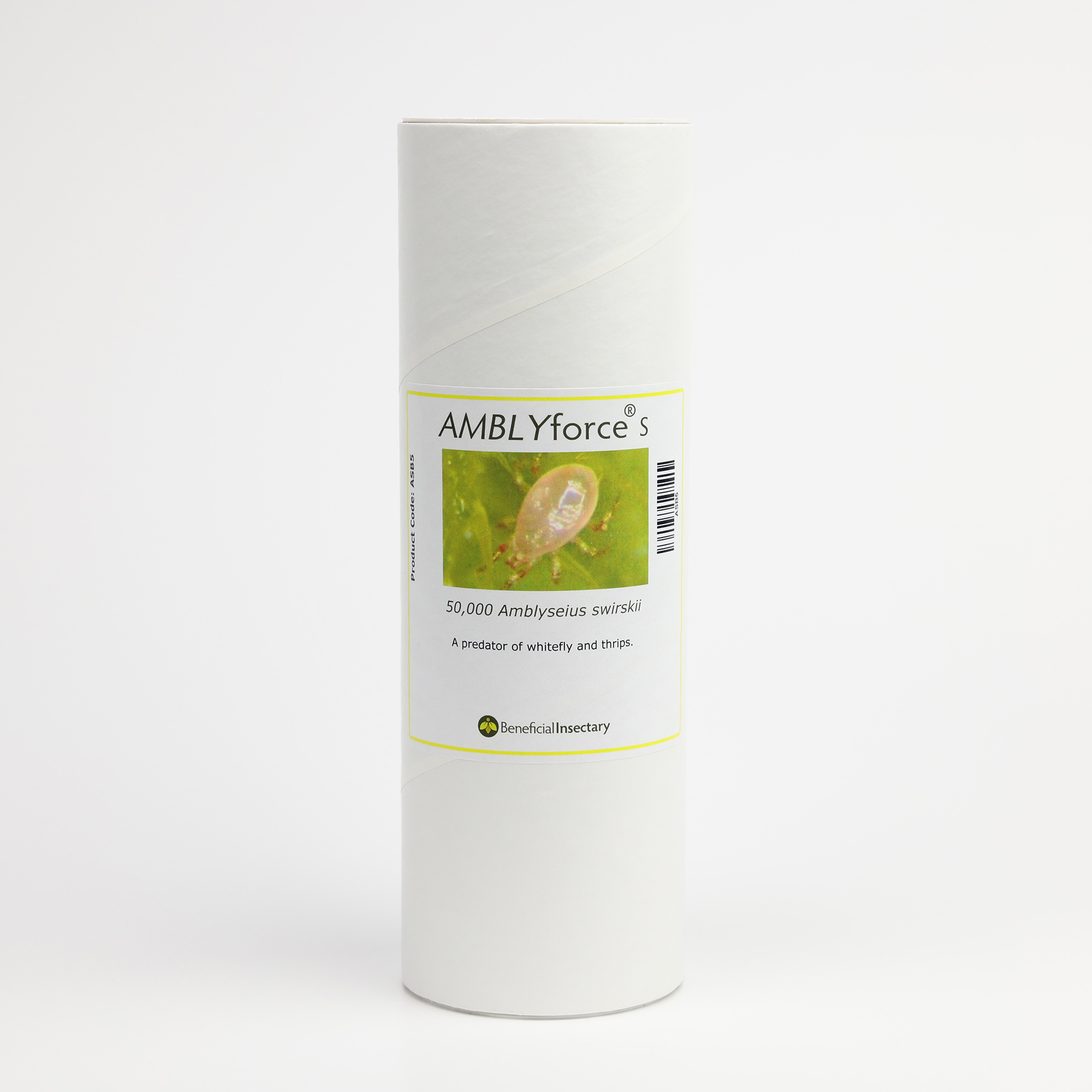
AMBLYforce™ S
(Amblyseius swirskii) These predatory mites can impact whiteflies and mites. Use this unit for control.
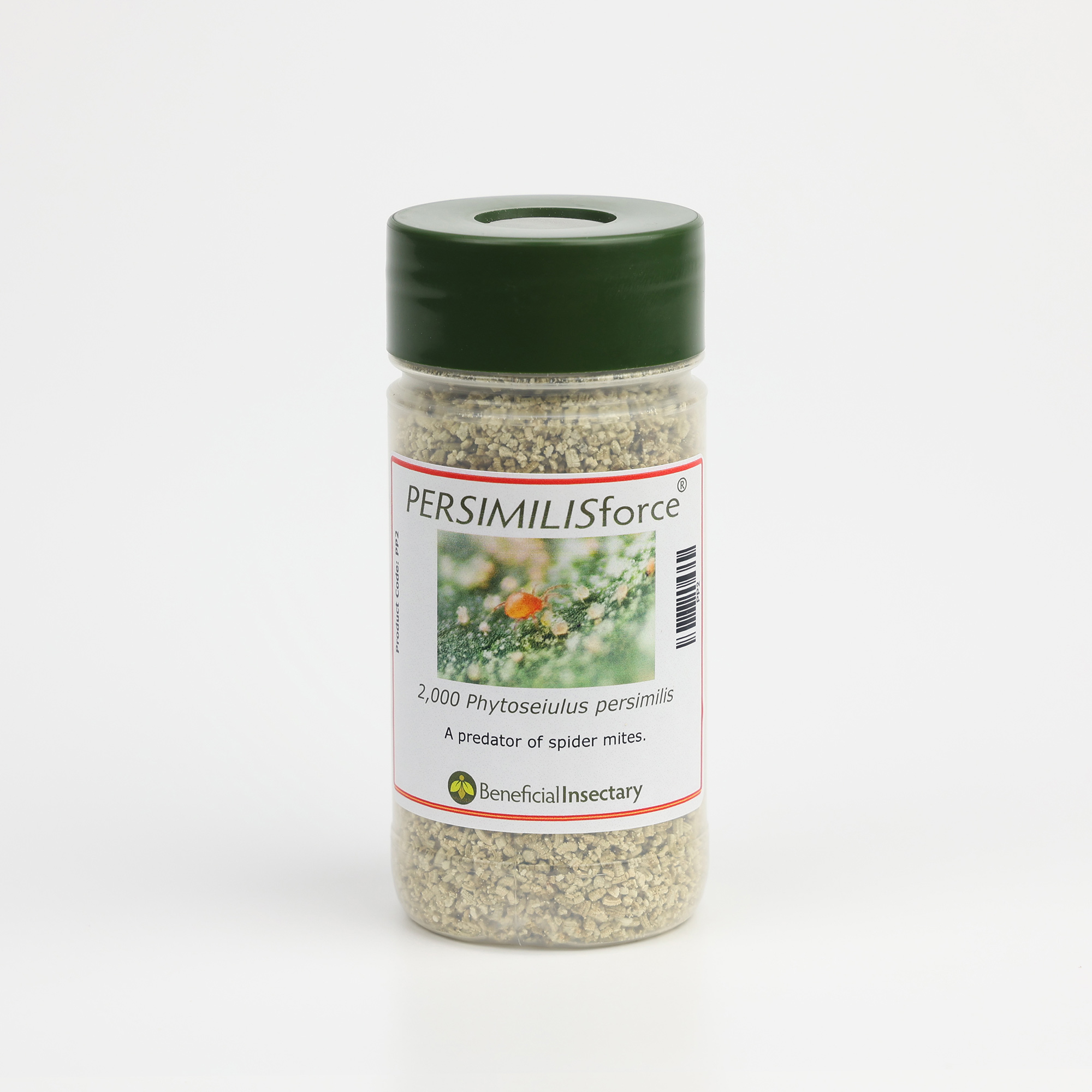
PERSIMILISforce™
(Phytoseiulus persimilis) For the medium- to high-infestation management of a two-spotted and related spider mite pest species. These are aggressive mites.
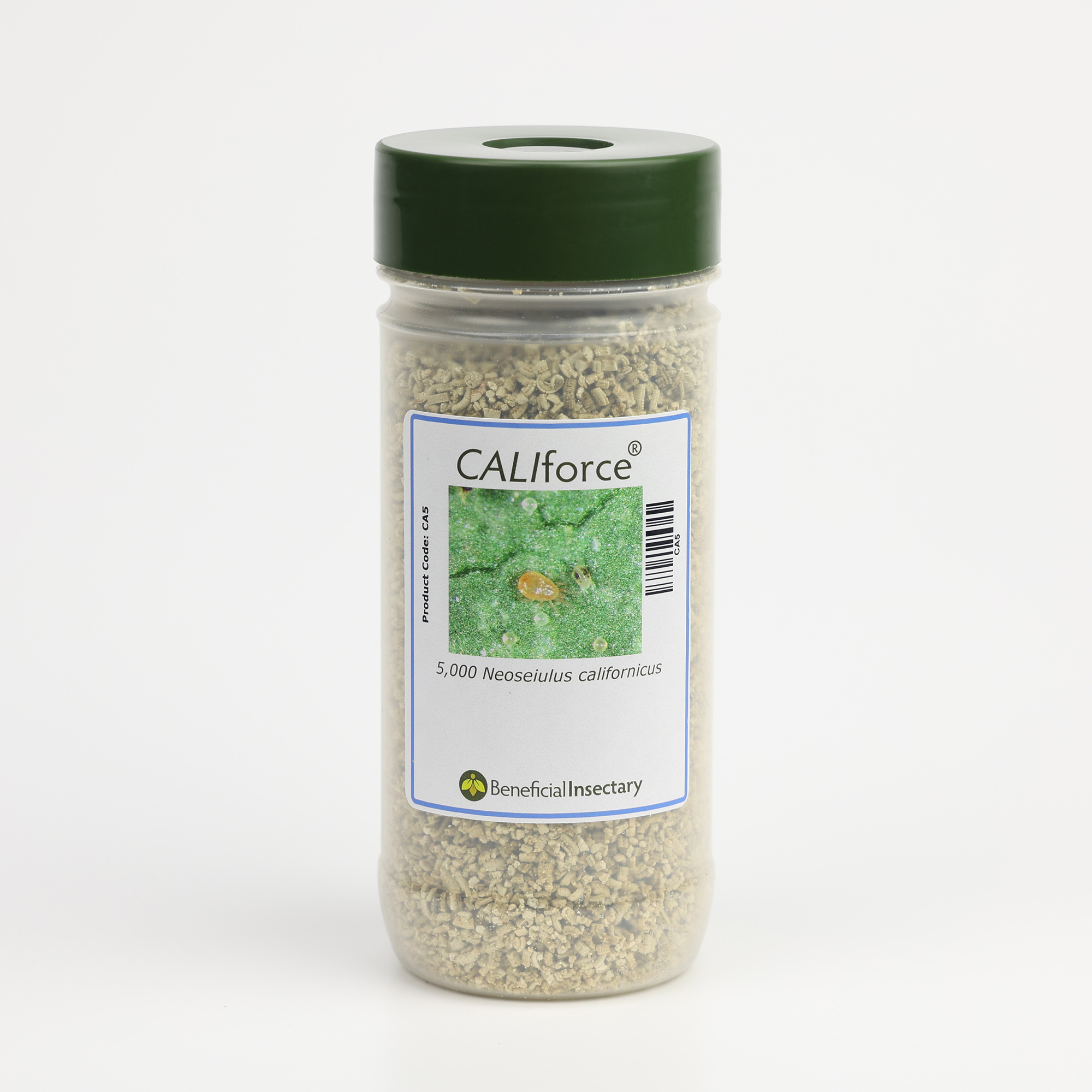
CALIforce™
(Neoseiulus californicus) If pest mite populations are sparse, these prevention-capable predatory mites are a solid choice.
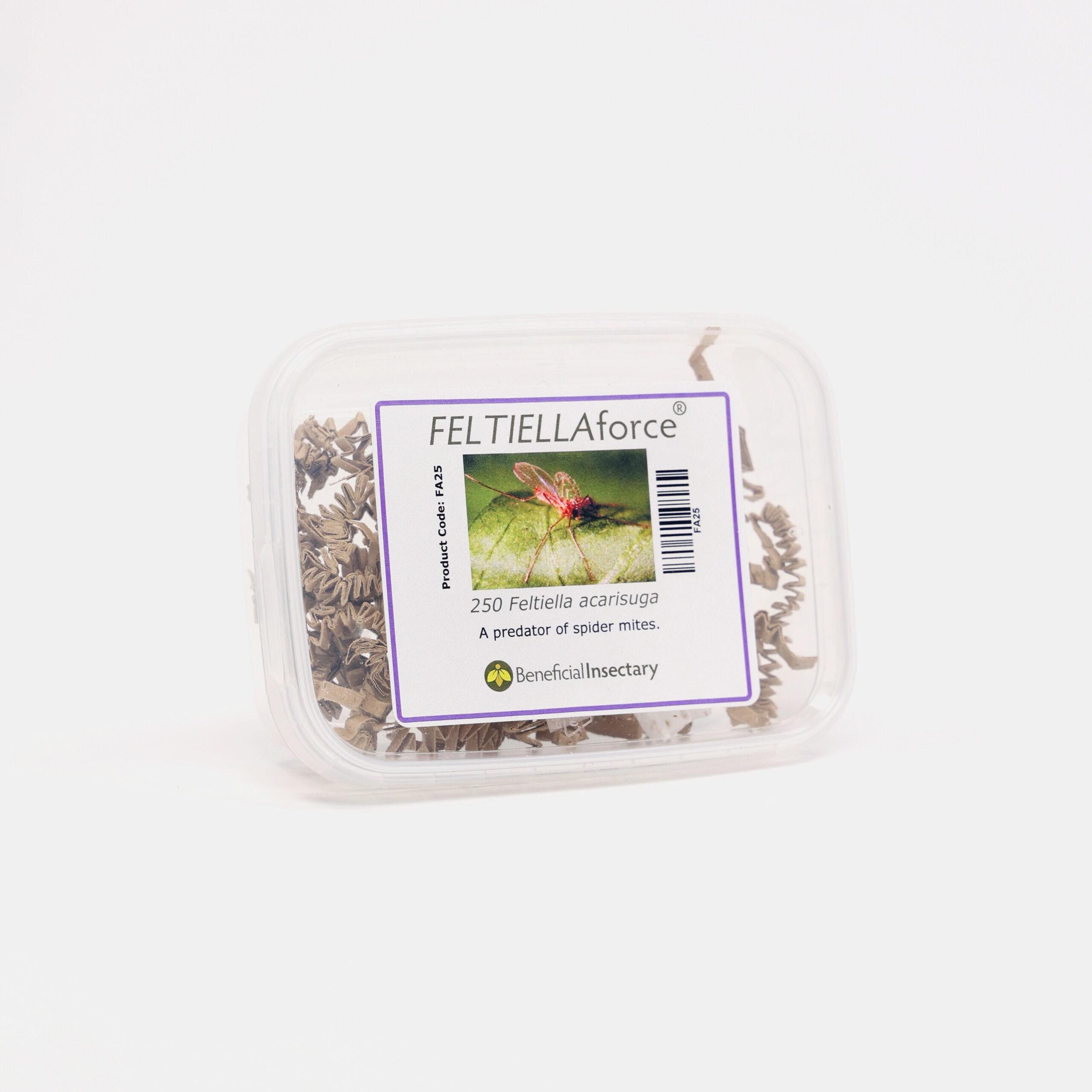
FELTIELLAforce™
Feltiella is a species of beneficial midge native to much of the world. The larvae are voracious predators of many spider mite species, including the destructive carmine mite.
